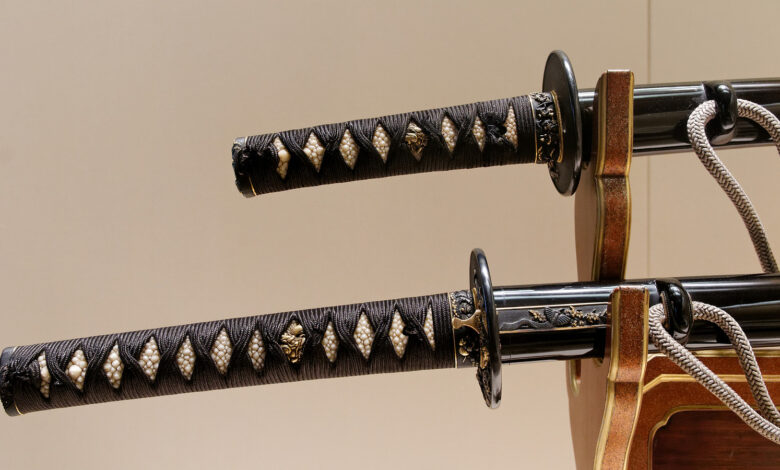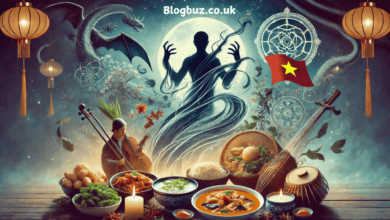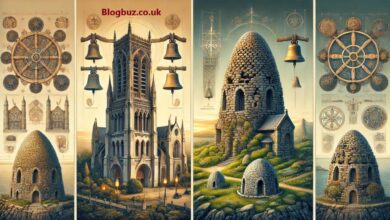Why Did the Japanese Like Swords?

Swords have always played an essential role in Japanese culture. Not only as weapons but also as symbols of status, honor, and artistry, swords such as the katana are revered objects which shape Japan’s history, society, and traditions.
Not simply battle-tools but spiritual symbols with profound cultural, historical, and spiritual associations for warriors; In this article we’ll look into why so many Japanese appreciate them so greatly and identify why their blades make their culture distinct.
Cultural and Spiritual Importance
Swords have an enormous cultural and spiritual importance in Japan. Shinto, their indigenous religion, regards swords as sacred objects that symbolize divine right of rulership – often serving as one of three imperial regalia worn by Emperors to represent this right.
Beyond its military role, swords were believed to possess spiritual properties as mediators between humans and divinities – their forging process was often filled with rituals and prayers to ensure its strength and purity – this process even involved swordsmiths making sacrifices invoking deities or spirits so their blade was strong and pure – this process even involved swordsmiths calling on gods or spirits so their blade was strong enough for wartime duty!
Samurai warriors saw their swords as much more than just tools of battle; they believed that it embodied their spirit, treating it with reverence and respect.
Seppuku, or ritual suicide, demonstrated this connection; in times of disgrace if facing disgrace, he would use seppuku with his Katana to take his own life as one last act to preserve honor and preserve family lineages. Such was its power that many swords passed from generation to generation keeping history alive through continuity in one family lineage ties that tied family generations together through continuity ties of blood lineage and continuity.
Swords were a prominent component of Buddhist traditions. Viewed as instruments for protecting spiritual purity from physical harm as well as impurity, swords were frequently employed in various ceremonial contexts to further heighten their significance and mystique.
The Aesthetic Appeal of Swords
Japanese swords are revered worldwide for their beauty and craftsmanship, with each blade representing centuries of tradition and expertise.
Crafting one requires years of master swordsmithing skill – just forging one could take months (if not years). Folding and hammering layers of steel together into layers which strengthen and increase flexibility of its blade is involved!
The beauty of a katana swords uk lies in its shape and form. Its curvature allows for efficient slicing while remaining visually pleasing; heat tempering leaves behind distinctive lines along its edge known as hamon, adding visual interest.
Craftsmen carefully design each part from its handle to its scabbard to achieve harmony between function and beauty in this masterpiece of sword craftsmanship.
Samurai warriors saw the katana as more than just a weapon; it represented an extension of their identity, providing an outlet to express personal tastes, status, and values while representing beauty, elegance, and refinement in equal measure.
Role of Swords in Martial Arts
Japan has long held on to an ancient swordsmanship tradition that dates back centuries, with various schools of Kenjutsu (sword technique) appearing over time.
Not only was martial art about physical skill and moral fortitude; the katana became the symbol of mastering both body and mind for its users – this became especially apparent among samurais who could wield both body and mind with ease.
Modern society saw the birth of Kendo (the way of the sword), a sport which continues to be practiced today. Retaining many of the philosophical principles from Kenjutsu – such as discipline, respect, and personal growth – this martial art perpetuates Katana’s legacy both physically as well as symbolically through this martial art practiced today.
Swords as Cultural Legacies
Since the disbanding of Japan’s samurai class in the 19th century, swords have continued to play an essential role in Japanese culture. Sword-making remains a respected craft and many swordsmiths continue ancient traditions by forging blades by hand.
The katana’s influence can also be found in modern Japanese media such as literature, film and anime. Characters depicted wielding swords often embody the values associated with samurais – honor, discipline and bravery – contributing to their ongoing appeal worldwide and fueling an interest for Japanese swords that remains relevant today.
Psychological and Symbolic Attachment to Swords For the samurai warrior, his sword was more than just an instrument for war: it represented his soul. A close bond developed between warrior and weapon; in fact, these relationships often included giving their weapon its own name and treating it with great reverence even during times of peace.
Psychological attachment to swords was not limited to the samurai. Ordinary people also appreciated its beauty, craftsmanship, and historical significance; owning such fine blades became an indication of status among samurai warriors and merchants, who went to great lengths to obtain them.
Swords as Status Symbols
In feudal Japan, swords were an emblematic status symbol; its ownership strictly controlled. Samurai warriors and certain officials could carry swords as a mark of their elevated social and political standing; their sword was not just used for war purposes but also stood as a visual representation of one’s position in society’s rigid hierarchy.
The sword also played an integral part in Japanese government. Shoguns, warlords, and samurai relied on swords as instruments of control to enforce authority and maintain order; during times of rebellion it would either be used against opponents or wielded against them depending on which side one stood on.
Conclusion
Japan has long held an indefatigable love affair with swords that is deeply rooted in history, culture, spirituality, and art. The Makoto Swords in particular became much more than a weapon; it became a symbol of honor and identity among samurais, revered piece of craftsmanship, and spiritual tool used for healing by its owner.
Today its legacy lives on in modern Japanese society-from preservation of sword-making traditions to portrayals of heroes wielding the blade in media depictions – because these objects represent rich cultural heritage that still resonate today among Japanese.



